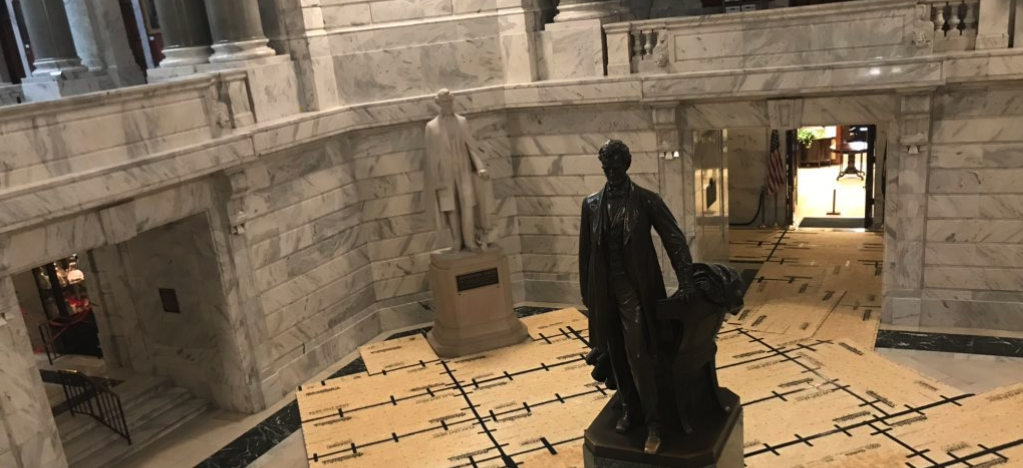 |
| Elkhorn: Evolution of a Kentucky Landscape by Richard Taylor |
As readers of this blog know, I am passionate about Kentucky and Kentucky history. Although not a native to the Commonwealth, I have lived here for most of my life and have developed a deep love of place. Kentucky, however, is an expansive place with different locales and environments. From the urban cores of Lexington and Louisville to the Appalachian hills to the wide fields of western Kentucky, Kentucky’s topography is not homogenous. Yet, I still love this place.
A new book published by the University Press of Kentucky, Elkhorn: Evolution of a Kentucky Landscape, explores the rich history of a creek that cuts through central Kentucky.
The author, Richard Taylor, explains in his introduction, his passion for this place. For forty or so years, Taylor had developed a passion for a narrow slice of Kentucky and he wanted to share his passion with his readers. Taylor introduced me to what he described as “a new name for an old concept – the love of place”: topophilia.
“Topo” means “place” in Greek and “philia” is “love of.”
Taylor’s topophilia for the microregion he has inhabited for the past forty years is infectious and his telling of its history most informative.
Through the course of ten chapters, Taylor examines the prehistoric past, the Native Americans who once hunted here, the arrival of the white settlers and their attempts at taming the waters of the Elkhorn Creek. The tenth chapter is reserved as a miscellanea for other anecdotes and stories that might not best fit into other chapters.
Among the anecdotes I found most interesting were those related to “ghost bridges.” Of course, the Switzer Bridge is well known and remains intact following a 1997 restoration following a devastating flood. Not all bridges that crossed the Elkhorn, however, have been so luck. At one time, over four hundred covered bridges crossed Kentucky creeks and rivers. According to Robert Laughlin, author of Kentucky’s Covered Bridges, only a dozen covered bridges remain. But “ghost bridges” can be found across Kentucky and several are noted along the Elkhorn. Stone abutments evidence old paths which would have carried travelers and commerce alike.
The character, however, who serves almost as Taylor’s protagonist is one the author admits “is hardly a household name.” Judge Harry Innes.
I know of no monument to him other than his tombstone in the Frankfort cemetery, not even a street name in a capital dedicated to commemorating its notable dead. Ask the name of the first federal judge west of the mountains and only a handful of local historian can name him. Ask who presided over the first treason trial of Aaron Burr and most will draw a blank. Yet Harry Innes was an important player in the formation of Kentucky, active in eight of the ten conventions that resulted in Kentucky’s separation from the mother state of Virginia at its beginning 225 years ago as the fifteenth addition to the Union.
 |
| Judge Harry Innes. Portrait by Matthew Harris Jouett |
Yes, Judge Harry Innes was a significant force in Kentucky’s history. Taylor paints an excellent portrait of the man, one self described himself “first a Kentuckian, and secondly, an American.” As I seek here to review Taylor’s work and not share its secrets, suffice it to say that Innes is a challenging character as well.
In recent history, we have learned that this is true of many of our revered founders and historical figures. Taylor notes the benefits of “historical hindsight” and observes that “history does not paint in black and white but in hues and shadows.”
Similar to how the artist Paul Sawyier painted his beautiful watercolors of the same watershed with hues and shadows, so, too, does Taylor with his words. If you love the Elkhorn or have a general topophilia for our Commonwealth, Elkhorn: Evolution of a Kentucky Landscape is worthy of your time.
Disclaimer: The author was provided with a courtesy copy of the book by the publisher for the purposes of writing a review. Additionally, links in this post to amazon.com are affiliate links.









